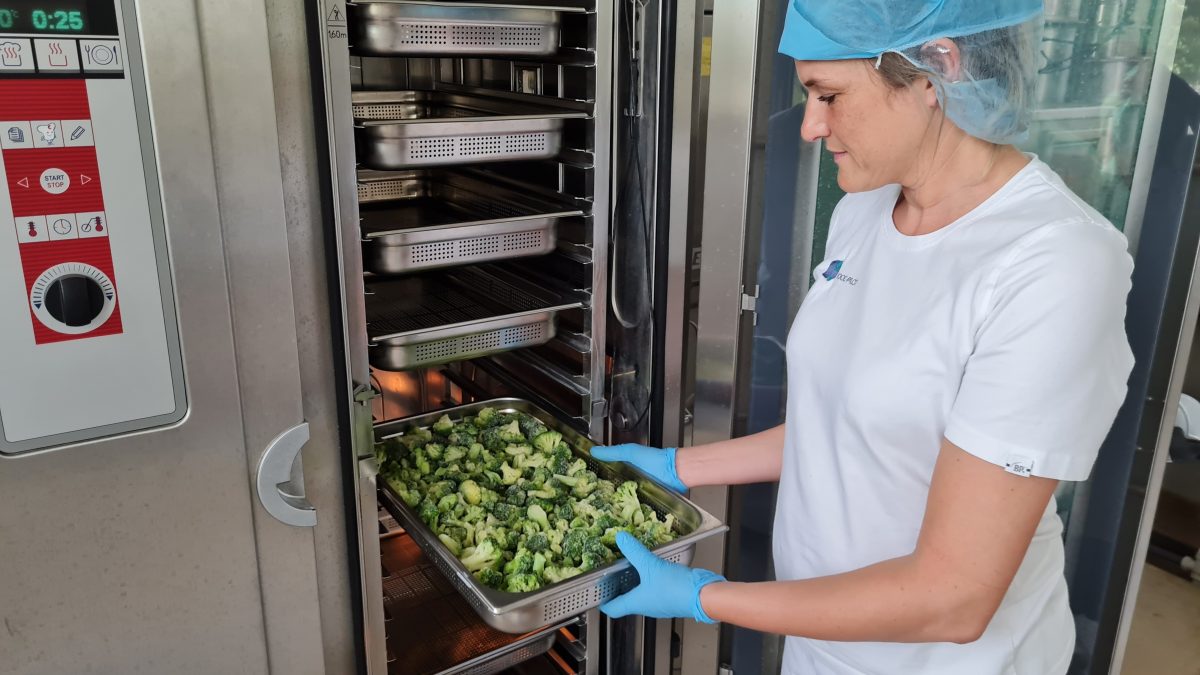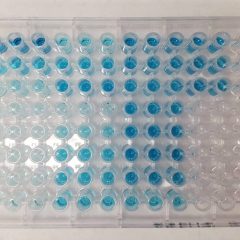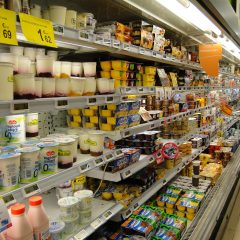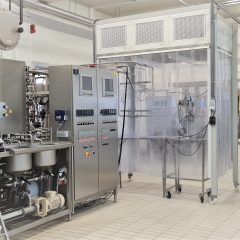Research project Evaluation of food quality throughout the vegetable processing chain

General introduction
Pre-treatment and regeneration techniques for vegetables, and how to retain maximum quality all the way to the consumer's or patient's plate, and gaining technical knowledge about this, was the result of the VeggieChain project. "Regeneration" means reheating and preparing pre-prepared and cooled (or frozen) vegetables for consumption in the best possible way. Vegetables that have been processed (frozen, preprocessed or prepared) are an important part of ready-to-eat meals for the 21st century consumer. In the healthcare environment, many commercial kitchens work with the intermediate steps of preparation - cooling - regeneration. The optimal preservation of taste, color, aroma, vitamins and health-related components, to the highest degree possible, is even more important now.
Research approach
Through small-scale and semi-industrial experiments, innovative processing strategies for vegetables have been developed. In addition to pure nutritional preservation, efforts were made to maximize the sustained appeal of taste, color and smell. The patient or resident's desire to eat regenerated vegetables is crucial in care environments such as hospitals or nursing homes.
Relevance/Valorization
Throughout the various Work Packages (WP), all quality changes were consistently taken into account to gain a better understanding of the (bio)chemical transformations occurring within the matrix throughout the processing chain. In WP1 and WP2, quality changes across matrices were reported in papers, often focusing on flavor-related changes on the one hand and health-related changes on the other. In WP3, WP4, and WP5, all quality changes were integrated and valorized per matrix, as these WPs delivered a final edible product. The results indicated that the choice of pre-treatment was often decisive in determining the final quality profile at the end of the chain. It was also observed that striving for quality required trade-offs. Limiting enzymatic conversions helped preserve vitamin C and carotenoids while maintaining a nuanced volatile profile. On the other hand, facilitating enzymatic conversions enabled the desired transformation of glucosinolates and ACSOs into health-promoting compounds but also led to a more pronounced volatile profile.









